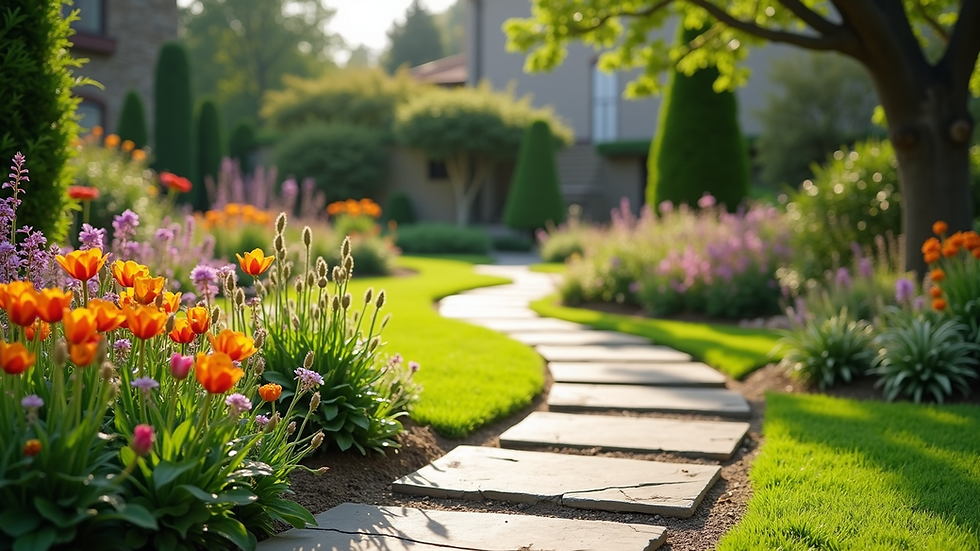Water-Saving Sprinkler Installations: A Sustainable Choice
- Gene Melius
- Aug 14
- 4 min read
Water is one of our most precious resources. As climate change continues to impact our environment, the need for sustainable practices becomes more urgent. One effective way to conserve water is through the installation of water-saving sprinklers. These systems not only help reduce water usage but also promote healthier landscapes. In this post, we will explore the benefits of water-saving sprinkler installations, how they work, and practical tips for choosing the right system for your needs.
Understanding Water-Saving Sprinklers
Water-saving sprinklers are designed to deliver water more efficiently than traditional systems. They use advanced technology to minimize waste and ensure that plants receive the right amount of moisture.
Types of Water-Saving Sprinklers
There are several types of water-saving sprinklers available on the market. Here are a few popular options:
Drip Irrigation: This system delivers water directly to the roots of plants through a network of tubing and emitters. It reduces evaporation and runoff, making it highly efficient.
Smart Sprinkler Systems: These systems use weather data and soil moisture sensors to adjust watering schedules automatically. They ensure that your garden gets the right amount of water based on current conditions.
Rotary Sprinklers: These sprinklers rotate to cover a larger area while using less water. They are ideal for lawns and larger garden spaces.
Benefits of Water-Saving Sprinkler Installations
Investing in a water-saving sprinkler system comes with numerous advantages. Here are some key benefits:
Water Conservation: The most significant benefit is the reduction in water usage. These systems can save up to 50% more water compared to traditional sprinklers.
Cost Savings: Lower water bills are a direct result of reduced consumption. Over time, the savings can add up significantly.
Healthier Plants: Efficient watering promotes healthier root systems and reduces the risk of overwatering, which can lead to diseases.
Environmental Impact: By conserving water, you contribute to the sustainability of your local ecosystem. This is especially important in areas prone to drought.
Increased Property Value: A well-maintained landscape can enhance the value of your property. Water-saving systems can be a selling point for potential buyers.
How to Choose the Right Water-Saving Sprinkler System
Selecting the right system for your garden or lawn can be overwhelming. Here are some practical tips to help you make an informed decision:
Assess Your Landscape
Before choosing a system, evaluate your landscape. Consider the size of your garden, the types of plants you have, and the layout of your yard.
Determine Your Water Needs
Different plants have varying water requirements. Group plants with similar needs together to optimize your watering schedule.
Research Available Options
Take the time to research different types of water-saving sprinklers. Look for systems that fit your landscape and budget.
Consult a Professional
If you are unsure about which system to choose, consider consulting a landscaping professional. They can provide valuable insights and help you design an efficient watering plan.
Installation Tips for Water-Saving Sprinklers
Once you have chosen a system, proper installation is crucial for optimal performance. Here are some tips to ensure a successful installation:
Follow Manufacturer Instructions: Always refer to the installation guide provided by the manufacturer. This will help you avoid common mistakes.
Plan Your Layout: Before installation, plan the layout of your sprinkler system. Ensure that all areas of your garden will receive adequate coverage.
Test the System: After installation, run the system to check for leaks or uneven coverage. Make adjustments as needed.
Regular Maintenance: Schedule regular maintenance checks to ensure your system is functioning correctly. Clean filters and check for clogs to maintain efficiency.
Real-Life Examples of Water-Saving Sprinkler Success
Many homeowners have successfully implemented water-saving sprinkler systems. Here are a couple of inspiring examples:
Case Study 1: The Johnson Family
The Johnson family lives in a region that often experiences drought. They decided to install a drip irrigation system in their vegetable garden. After the installation, they noticed a significant reduction in water usage. Their plants thrived, and they were able to grow more produce than ever before.
Case Study 2: Community Park Initiative
A local community park implemented a smart sprinkler system to manage their irrigation. By using weather data, the system adjusted watering schedules based on rainfall and temperature. The park not only saved water but also improved the health of its plants, creating a more vibrant space for the community.
The Future of Water-Saving Technology
As technology continues to advance, the future of water-saving sprinklers looks promising. Innovations such as AI-driven systems and improved sensor technology will make it even easier to conserve water.
Smart Home Integration
Many new systems can integrate with smart home technology. This allows homeowners to control their sprinklers remotely and receive alerts about watering schedules.
Eco-Friendly Materials
Manufacturers are increasingly using eco-friendly materials in their products. This trend not only benefits the environment but also appeals to consumers looking for sustainable options.
Taking the First Step Towards Sustainability
Making the switch to a water-saving sprinkler system is a significant step towards sustainability. It not only benefits your garden but also contributes to the larger goal of conserving our planet's resources.
Get Started Today
If you are ready to make a change, start by researching the options available in your area. Consider your landscape and water needs, and consult with professionals if necessary.
Join the Movement
By choosing a water-saving sprinkler system, you are joining a growing movement of individuals and communities committed to sustainability. Every drop counts, and your efforts can make a difference.
Final Thoughts
Water-saving sprinkler installations are more than just a trend; they are a necessary step towards a sustainable future. By conserving water, you not only save money but also contribute to the health of your landscape and the environment.
As you consider your options, remember that every small change can lead to significant results. Whether you are a homeowner, a gardener, or part of a community initiative, embracing water-saving technology is a choice that benefits us all.



Comments